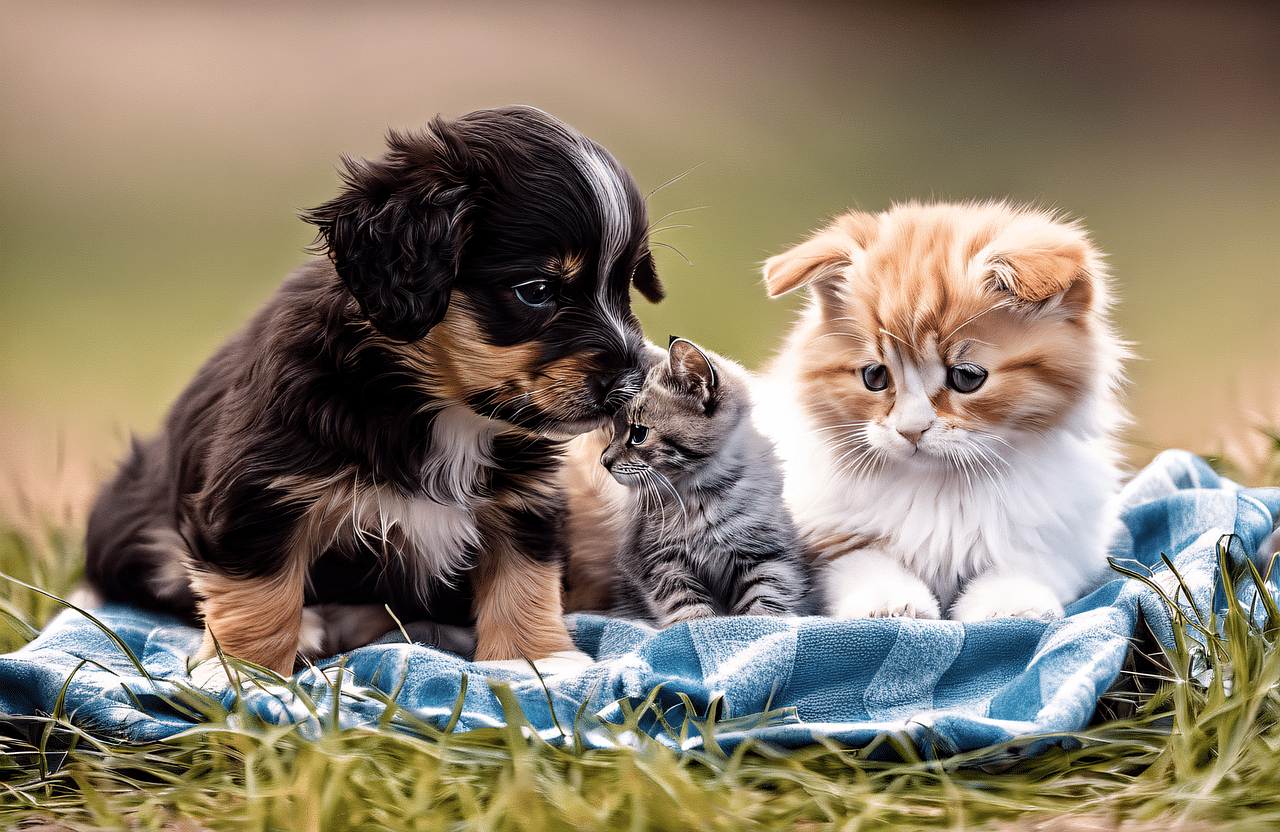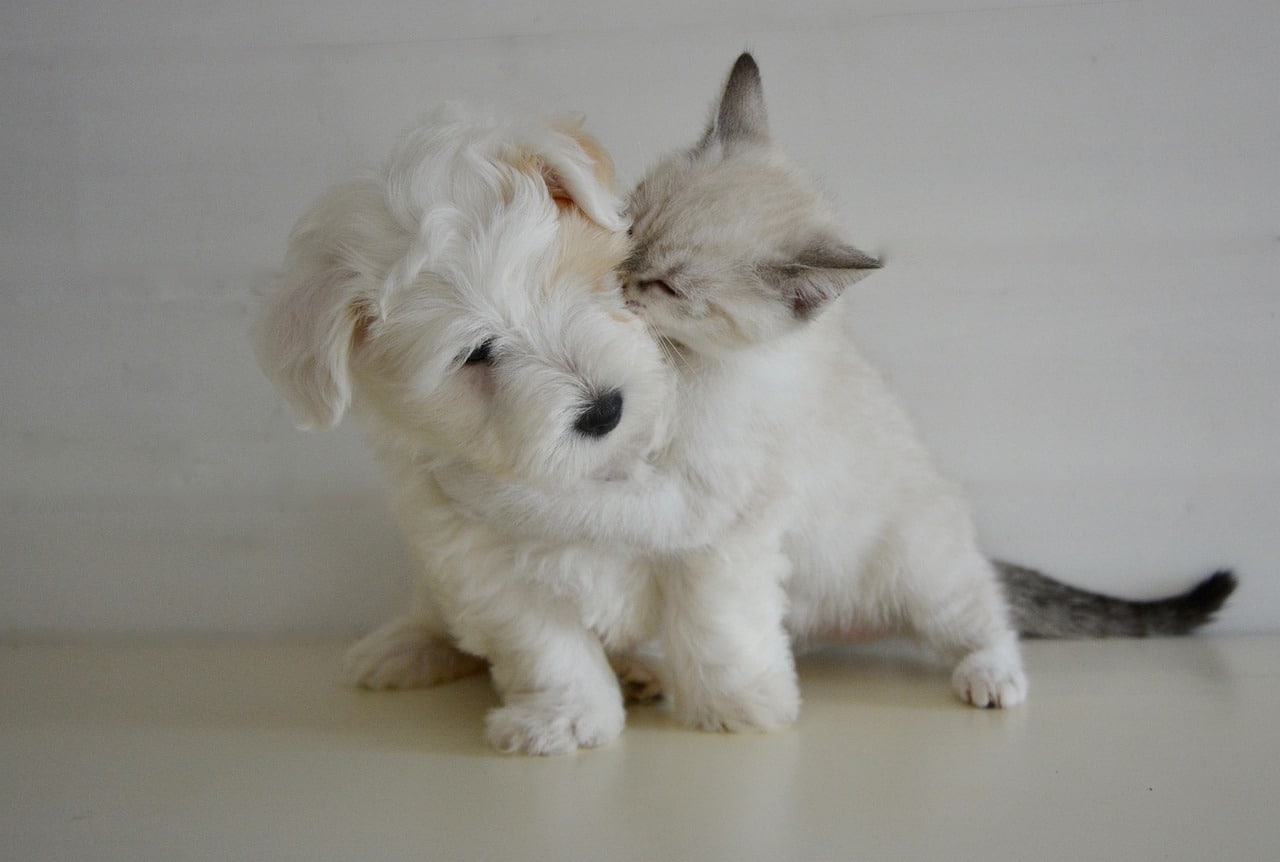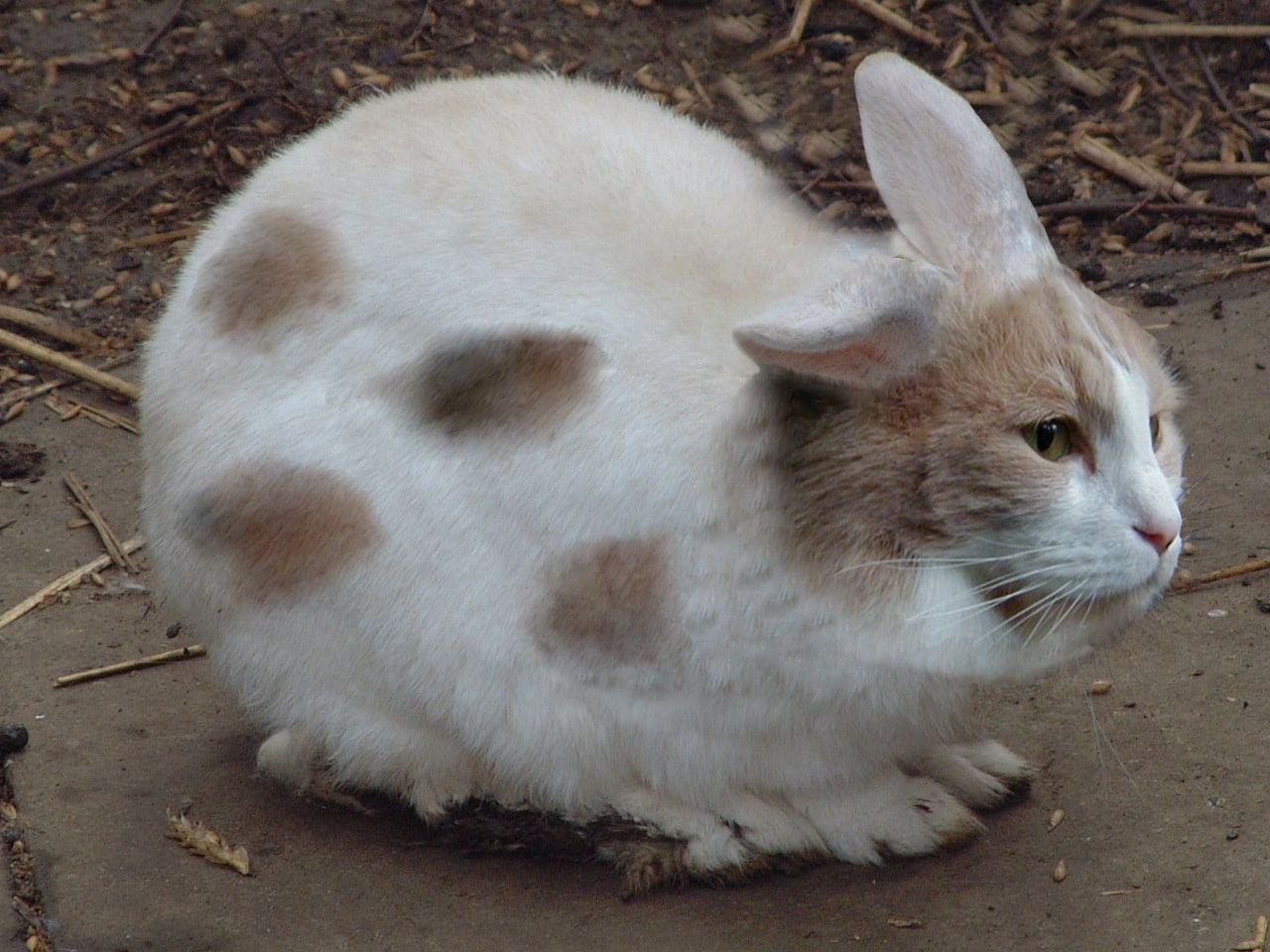
Can Cats and Dogs Have Babies? De-Bunking The Curious Myth of Cat-Dogs
This post contains affiliate links. Read the full disclosure here.
Millennials and Zoomers should be vaguely familiar with the infamous Nickelodeon animated series CatDog, a show that features the adventures of conjoined hybrid twins aptly named Cat and Dog.
Although most people are quick to accept that such hybrid pets are impossible to exist in real life, the proliferation of photos and news articles asserting the existence of cat-dogs, dittens, or kuppies on various social media platforms makes the claims look legitimate.
With all the advances in science today, this begs the ultimate question: is crossbreeding between two different species plausible? Can cats and dogs truly have babies?
A remarkable curiosity: The birth of cat-dog hybrids
It almost seems like the reports originated as an April Fools’ Joke to chase clout on social media. In truth, though, reports of cat-dog hybrids have been around for almost a hundred years.
In 1889, the Indiana State Sentinel reported about a man who found a litter of bulldog puppies, one of which was sporting fine “cat’s fur” instead of the usual dog hair.
Four years later, North Carolina’s Wilmington Messenger wrote about the existence of a cat-shaped, hairless Mexican dog, which was allegedly birthed by a closely kept and confined cat along with five other kittens. While both news stories managed to be forgotten in the annals of history, two separate articles published in 1937 gave a revealing insight into the cat-dog hybrid claims.
The first article reported about a Florida cat owner who allegedly witnessed her cat giving birth to three kittens and two puppies, all of which had black fur with white patches. A few days later, a second article reported that three of the cat owner’s neighbors came forward and confessed that they saw the cat giving birth to five kittens—three black and two gray ones—which the owner promptly swapped with two black puppies from another pet owner and then made fraudulent claims to news reporters that they witnessed a cat-dog hybrid birth.
In 1970, history repeated itself when English man Roy Tutt claimed to have successfully bred the very first dog-cat hybrid. His claims were taken seriously enough that they were reported by reputed news sources such as Reuters, the Associated Press, and the United Press International, which helped spread the story across the continent and to other countries such as Australia and the USA.
However, a few days after the news had already spread far and wide, Tutt admitted that it was all just an elaborate ‘practical joke’ aimed at his neighbors and friends and that he did not expect the joke to spread outside his local community.
Unfortunately, claims of alleged truth about cat-dog hybrids are still being made today.
Does this mean that the cat-dog hybrid is a hoax?
As much as it might be fun to think about the possibility of combining the genetic features of the two most beloved pet species, it’s just not possible given that their basic biology is vastly different. A dog’s sperm will never be able to fertilize a cat’s egg and vice-versa.
Aside from the obvious physical mismatch, the base chromosomes of both animals are highly incompatible. In the simplest of terms, chromosomes are the genetic material that holds all the hereditary information that makes any individual unique. According to scientists, dogs carry 39 chromosome pairs, while cats have only 19.
If high school biology class has taught us anything, it’s that a sperm cell contributes exactly half of its chromosomes to pair up with half of the egg cell’s chromosomes in order for conception to happen. This means that if a dog and a cat conceived, then there would be 20 chromosome pairs from the dog that wouldn’t be used, making it impossible.
Does this mean that all reports of animal mix breeds are fraud?
Well, no. Just because cat-dogs are not real does not mean that other interspecies breeds do not exist.
Generally speaking, the number of chromosome pairs between the parents does not need to match to conceive a baby; that is, the number of chromosome pairs between the parents can be off by one or two pairs (at most) for conception to take place.
For example, mules, which have 63 chromosomes, are born from mating male donkeys (62 chromosomes) with female horses (64 chromosomes). However, donkeys and horses both belong to the Equus family.
Simply put, interspecies crossbreeding can occur if the number of chromosome pairs in both animals is almost the same and if their species are closely related to each other. This means that the species must have the same chromosome base pairs for hybridization.
In this case, cats belong to the Felidae family while dogs belong to the Canidae family.
Interestingly, cats are pretty well-known for crossbreeding within the Felidae family. So far, there are over 40 known interspecies cat breeds, examples of which include the following:
- Ligers and Tigons: crossbreed of lion and tiger
- Savannah: crossbreed of domestic cat and African serval
- Bengals: crossbreed of Asian leopard and domestic cat
- Chausie: crossbreed of domestic cat and jungle cat

On the other hand, crossbreeding within the Canidae family (domestic dogs, coyotes, and wolves) resulted in Coydogs, Coywolves, and Wolfdogs.

So, while cat-dog hybrids are proven to be a hoax, cross-species breeding does exist.
If hybrids are possible, then why don’t we see more of them in real life?
The answer lies in genetics. For reasons related to the survival of the species, most creatures prefer not to interbreed, as this greatly decreases their capability of reproducing.
Again, let’s take a look at the mule as an example. The odd number of chromosome pairs in its genes, along with the slight differences in the genes themselves, have basically rendered it infertile, meaning that male mules cannot mate with other mules and produce offspring.
Another factor is the physical distance between the animals that can interbreed. For example, lions and tigers can crossbreed to produce either a liger or a tigon. However, a lion’s natural habitat can be found in distant sub-Saharan jungles in Africa, while tigers are usually found in the wild jungles of Asia. So, while the two wild cat species can interbreed, the distance between them makes it impossible to mate.
Final Thoughts
While it’s fun to think of having pets that take both from our beloved pet cats and dogs, this hybrid pet will never become a reality. Despite the many marvels of modern science, some things like cat-dogs, kuppies, and dittens will have to remain in the hearts and minds of wildly imaginative individuals.
Not to fret, though, as it’s still possible for you to enjoy the delightful characteristics of both a cat and a dog in your home, as many of them get along and live happily together.
First-time cat owner? Click here for a complete guide.
Featured Image Credit: we_are_small / Pixabay
Adams, C. (2024, February 6). Can a dog get a cat pregnant? Vet-reviewed facts & FAQ. Catster. https://www.catster.com/guides/can-a-dog-get-a-cat-pregnant/.
Blackman, S. (2023, June 27). Do animals cross-breed in the wild? How and why interbreeding between different species happens. Discover Wildlife. https://www.discoverwildlife.com/animal-facts/do-animals-cross-breed-in-the-wild.
McCarthy, E.M. (n.d.). Cat-dog hybrids: Mammalian hybrids. Macro Evolution. https://www.macroevolution.net/cat-dog-hybrids.html.
Pickett, L. (2022, October 24). Ask the Vet: Cat-dog hybrids just can’t happen, but other species do interbreed. Northwest Arkansas Democrat-Gazette. https://www.nwaonline.com/news/2022/oct/24/ask-the-vet-cat-dog-hybrids-just-cant-happen-but/.
Wright, A. (2022, August 23). Kuppies, cat-dogs, and other pet hybrids that are too good to be true. Atlas Obscura. https://www.atlasobscura.com/articles/kuppies-catdogs-pet-hybrids-hoax.


